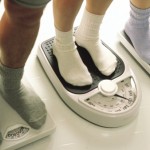Exercise benefits for osteoporosis: Reduces bone fracture risk
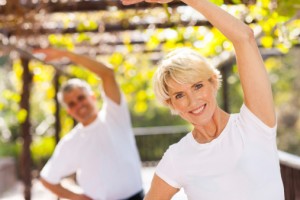 Over 50 million Americans are affected by osteoporosis and bone fractures, making prevention methods a focus and putting exercise benefits in the spotlight.
Over 50 million Americans are affected by osteoporosis and bone fractures, making prevention methods a focus and putting exercise benefits in the spotlight.
A recent hip hop study – no not the music, we literally mean hopping – has shed some light on how to reduce fractures risk, specifically fractures from osteoporosis. The study, conducted through a special mapping technique at the University of Cambridge, demonstrated that just two minutes of hopping per day could strengthen hip bones and reduce the risk of fractures after a fall.
Men over the age of 65 took part in a number of hopping routines that put stress on their hips. Hopping meant researchers could make comparisons between legs. CT scans were taken and analyzed through a bone mapping process that showed clear differences between the legs. After a full year of hopping, bone mass increases were observed. Most startling was that there were improvements in the thinnest areas of the bone. These areas are most at risk of fracture after a fall.
Researchers concluded that regular exercise could counteract the impact of bone aging, thus helping prevent and manage osteoporosis.
Since the study only involved men, we don’t know if men and women would get the same benefits from the exercise; however, the research suggests that the improvements recorded in the men are similar to bone gains experienced with osteoporosis drugs in women who have fragile hips.
People who suffer from hip fractures can end up suffering a lot. They have to face pain, loss of mobility, loss of independence and an increased risk of death. It is a big health concern for older adults and the public health system. It not only comes with personal costs, but social and economic costs as well.
Facts about osteoporosis fractures
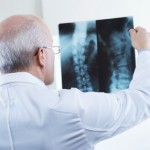 Osteoporotic hip fractures are not the only concern. Osteoporosis is a condition that causes bones to become thin and porous. This leads to a decrease in bone strength and a risk of breaking bones – and not just the hip bones. The wrist, spine and shoulder are also common sites for osteoporotic fractures.
Osteoporotic hip fractures are not the only concern. Osteoporosis is a condition that causes bones to become thin and porous. This leads to a decrease in bone strength and a risk of breaking bones – and not just the hip bones. The wrist, spine and shoulder are also common sites for osteoporotic fractures.
While osteoporosis is seen mainly in the elderly population, it can strike at any age. One of the reasons it hits the older population is because we begin to lose bone in our mid-30s. As women approach menopause they lose bone at a greater rate, from two to three percent per year.
Some medical officials call it the “silent thief” since bone loss can occur without any symptoms. There are people who have no idea they have an issue with their bones until they experience a fracture. Every year, well over eight million people worldwide have fractures from osteoporosis.
Why exercise is important in osteoporosis
Osteoporosis exercises are encouraged for a number of reasons. First and foremost exercise is good in a general sense, but building muscle strength can be really beneficial to people who may be at risk of losing bone mass. Stronger muscles can help improve balance, which can prevent falls. Balancing exercises are therefore a good addition to any workout routine. Regular exercise that includes muscle strength or resistance training, as well as weight-bearing aerobic activity can help prevent bone loss, as we get older.
You don’t have to get overly aggressive, especially if you have already had a fall and are nervous about exercise. Nonimpact activities such as balance and posture exercises can benefit people with osteoporosis even though they don’t build bone density. These non-impact approaches can still increase muscle strength and decrease your risk of falling and potentially breaking bones.
If you are at risk of osteoporosis or you have already been diagnosed with osteoporosis, most doctors agree that supervised weight-bearing exercise is the safest.
Exercises which strengthen bones and reduce fractures risk
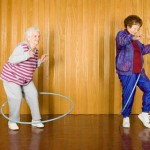 If you want to experience the benefits of exercise and reduce fracture risk there are four different areas you should consider.
If you want to experience the benefits of exercise and reduce fracture risk there are four different areas you should consider.
- Strength training – This area of exercise focuses on free weights, such as dumbbells, weight machines or exercise bands. They can make muscles and bones work by lifting, pushing and pulling.
- Balance training – These exercises reduce your base of support. For example, instead of standing on two legs, you stand on one. Challenging your balance can actually strengthen your balance.
- Posture training – This involves paying attention to how different parts of your body are aligned. The alignment of the spine can become a concern for people with osteoporosis.
- Weight bearing aerobic activity – This can be rhythmic activity that you do for at least 10 minutes at a time. Jumping rope, tennis or dancing are good examples.
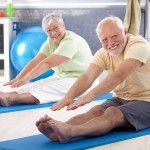 Yoga and Pilates are two very popular forms of exercise today. They can improve strength, balance and flexibility. While they may sound enticing, certain positions may not be safe for people with osteoporosis. As an example, movements that require you to bend forward could increase your chance of breaking a bone in your spine.
Yoga and Pilates are two very popular forms of exercise today. They can improve strength, balance and flexibility. While they may sound enticing, certain positions may not be safe for people with osteoporosis. As an example, movements that require you to bend forward could increase your chance of breaking a bone in your spine.
Here are some of the exercises that fall into the above categories and that osteoporosis sufferers say they have had success with.
- Functional movements, such as standing and rising up on toes
- Doing low-impact aerobics
- Using stair-step machines
- Fast walking on a treadmill
- Hiking
- Dancing
- Tai Chi
Canada’s physical activity guide recommends that all adults take part in at least 30 minutes of moderate to vigorous exercise five or more days per week. To put it in perspective, with moderate exercise you can still have a conversation with someone while working out, but with vigorous exercise, it’s harder to breath and harder to talk.
If you don’t already have an exercise routine in place, consider your ability and factor in your fracture risk as well as your overall health status. Start at a level you feel comfortable with and a level you know will be safe. Take it slowly and if you have any concerns don’t hesitate to consult your doctor.
It is only natural that when most people are diagnosed with osteoporosis they feel fear. That fear is usually related to falling and breaking bones. It’s important to note that many people with osteoporosis live comfortable, happy, active lives. Many individuals credit the benefits of exercise, specifically osteoporosis exercises, with giving them renewed confidence to get on with their lives.
Related reading:
Osteoporosis fracture risks in older women reduce by growth hormone
Estimates reveal one in four women over the age of 65 have osteoporosis of the hip or spine. Hormones are thought to play a large role in the development and onset of osteoporosis. Continue reading…
4 factors which contribute to bone loss
Bone loss, and more specifically osteoporosis, is often identified as a female health problem, but men are not immune to losing bone density. Continue reading…
-
Are Weight Loss Supplements Right For You
The debate about whether supplements for weight loss are healthy or no
-
Empty Calories and How to Avoid Them
If a calorie falls into your mouth, does
-
Tips on Losing Weight Fast - Five Recommendations for Achieving Astounding Fat Loss Results
Listed below are five tips on losing wei
-
Weight Loss Tips For Women
For many people weight loss is a chronic endeavor. All too often the
-
Time to fatten up our diets
Saturated and trans fat? No. But replacing carbohydrates with u
-
Effective Weight Loss Why Is Dieting Problematic For Some People
It always amazes me when people plan a diet, but cannot stick to the p
- DON'T MISS
- Weight Loss and Fitness Confusion? That Flabby Tummy Really Can Be Conquered.
- Important Tips For Walking To Lose Weight
- Your Brain Can Help You Lose Weight Or Make You Fat
- Reducing Stomach Fat
- Phentermine Pills And Weight Loss
- 5 Reasons I Gave Up On Cardio
- How To Get Slim - 10 Simple Tips
- Best Tips To Lose 10 Pounds In A Week
- What teas to drink to burn off the fat while you lose weight
- The Concept Behind The Calorie Cycling Way Of Losing Weight




